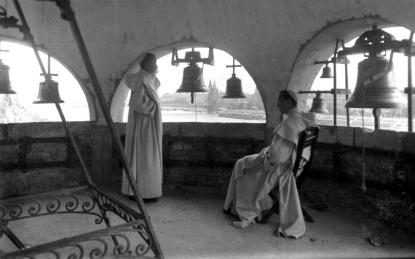|
|
Address: 7621, Pécs Papnövelde u. 5.
Phone number: (72) 514-040
E-mail: jpm@jpm.hu
Opening hours: Tue-Sun 10-18
|
|
Ticket for adults
|
460 HUF
|
|
|
Ticket for students
|
230 HUF
|
|
|
Ticket for pensioners
|
230 HUF
|
|
|
Guide
|
3000 HUF
|
|
|
Guide
|
5000 HUF
|

You want to show large sections of the visitors to the history of some of the elements, using the results of the past few decades, archaeological, literary, historical research is - creative solutions using spectacular compilation of Pauline - public education and közgondolkodásból has almost completely fallen out. And documents in the Pauline owns, among its numerous public collections guarded Pauline relevance original document will be shown in the exhibition - the national library, the Historical Museum, the Hungarian National Museum, the Academy and other institutions of Sciences collection, and several Hungarian painting relevance and other interest received "guest into" the system current center, Częstochowából well. Nagyvázsony Pauline monastery arose at the end of the XV. century Festetics Code, which created the Pauline monks Paul Kinizsi wife, Hungary Benignának and set today's Pauline pasztorációjának the service, pilgrimages multitude reaching a motorcycle just two examples of the diversity of objects and documents drawn up.
The exhibition does not follow the chronological order of events, but also produces large issues into focus. Main organizing force created by the Mongol invasion show, organized by Esztergom Blessed Eusebius, and today is the only existing male religious order founded in Hungary in Hungarian culture, defining spiritual life activities. The spirit of the law is still pervasive in connection with the hermitage of St. Paul the Hermit, the shape of the "recipient name," the former headquarters Pauline Budaszentlőrincnek, Matthias Corvinus lists (the ruins can be seen today in Austin road in Budapest) through "place of pilgrimage" presentation. Apart from a few fragments, which the former monastery survived, and which is now the Budapest History Museum are kept, we recall the cult, which St. Paul the Hermit once - thanks to Louis the Great King -. Formed guarded in body and fejereklyéje result
XVIII. the second half of the century "prosperous era" is displayed in the exhibition, which by law, spirit and schools, as well as Paul Jedlik, Kreskay Imre, Flower Benedict and Francis Verseghy Pauline poets and removed by other monks of the intellectual felpezsdülésből.
The exhibition highlights the most important and influential today the results of Pauline medieval and early modern radiance, Polish and Croatian colonization as well. After the 1786 dissolution - which involved 312 Pauline monks - the feudal tradition continued maintenance of the Poles played an important role. The oral áthagyományozás passed from one generation, the possibility of a key process of the monastic communities in Hungary was interrupted when the nineteenth century. died in the middle of the last century Hungarian Pauline. The Hungarian province 80 years ago to a restart, so in 1934, played an important role in Polish Paulines. Pauline also settled areas of Croatia in the Middle Ages, and not just part of the present day in the Croatian national identity, but also the importance of the centuries-old ties of the Croatian-Hungarian coexistence. The show flashes this topic as well.
An important priority is given to the animal associated with Pauline Pécs implications.
plays an important role in the assembly of Budapest, Gellért Hill history of operating in the side of the Rock Temple as well. We remember about the Pauline fathers, who were brought to the communist regime, including the 1951 executed Leader Francis, who in 2012 was buried after exhumation of high state dignitaries participation in a worthy manner the law Plains Monastery of Pauline Szentkút.
Exhibition connected announced by the Pope Francis, Christian monasticism focused year of consecrated Life (2 November 2014 and 30 February 2016) as well.
the organizers to accompany the various programs and museum education occupations are available here. Guided tours of the exhibition will be establishing the area and invited guests. Musical-literary walk, visitors can participate in the exhibition space, as well as archeology, literary, educational historian to listen to a lecture about Pauline.


